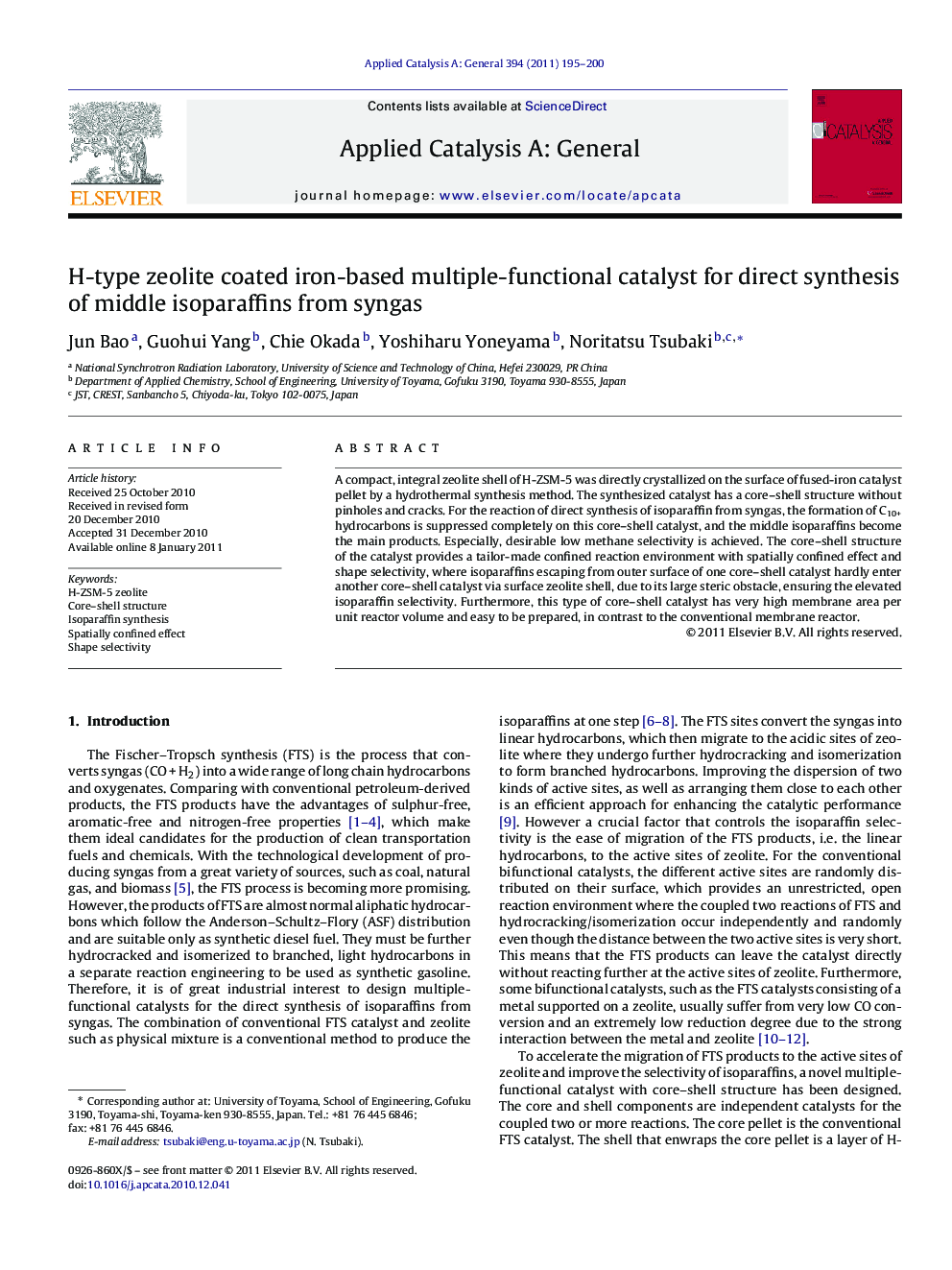| Article ID | Journal | Published Year | Pages | File Type |
|---|---|---|---|---|
| 41480 | Applied Catalysis A: General | 2011 | 6 Pages |
A compact, integral zeolite shell of H-ZSM-5 was directly crystallized on the surface of fused-iron catalyst pellet by a hydrothermal synthesis method. The synthesized catalyst has a core–shell structure without pinholes and cracks. For the reaction of direct synthesis of isoparaffin from syngas, the formation of C10+ hydrocarbons is suppressed completely on this core–shell catalyst, and the middle isoparaffins become the main products. Especially, desirable low methane selectivity is achieved. The core–shell structure of the catalyst provides a tailor-made confined reaction environment with spatially confined effect and shape selectivity, where isoparaffins escaping from outer surface of one core–shell catalyst hardly enter another core–shell catalyst via surface zeolite shell, due to its large steric obstacle, ensuring the elevated isoparaffin selectivity. Furthermore, this type of core–shell catalyst has very high membrane area per unit reactor volume and easy to be prepared, in contrast to the conventional membrane reactor.
Graphical abstractFigure optionsDownload full-size imageDownload high-quality image (167 K)Download as PowerPoint slideResearch highlights▶ The core–shell catalyst shows excellent performance for the direct synthesis of isoparaffin. ▶ The core–shell structure produces a spatially confined effect and shape selectivity. ▶ Especially, desirable low methane selectivity is achieved. ▶ This type of core–shell catalyst has high membrane area per unit volume and easy to be prepared.
